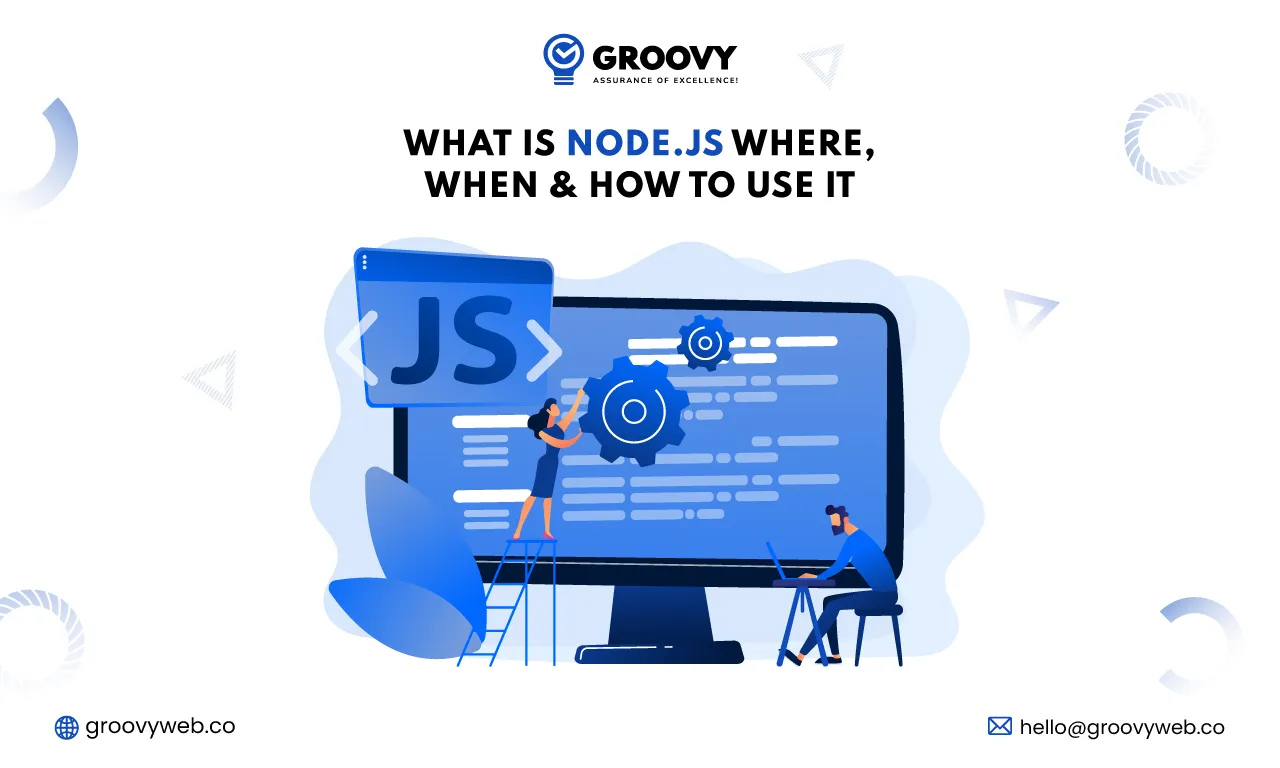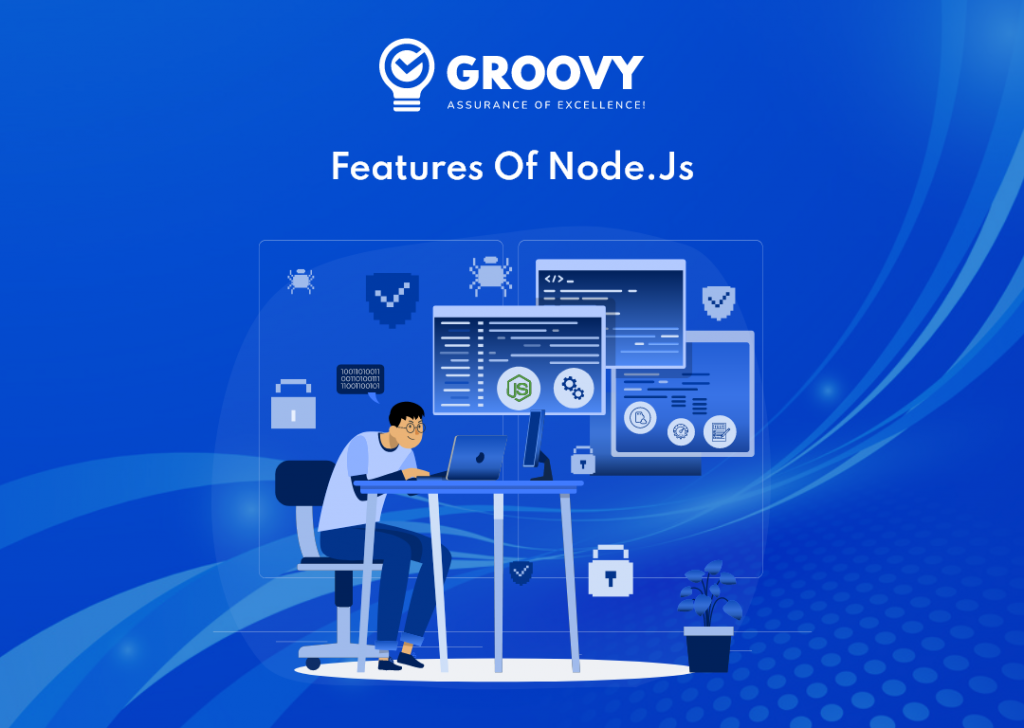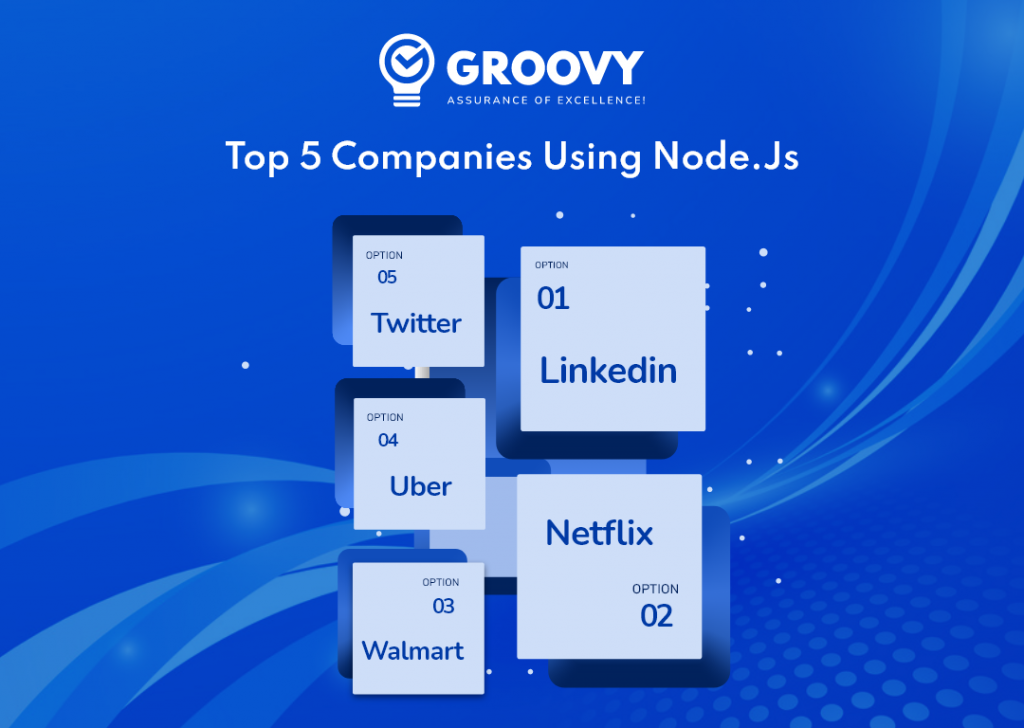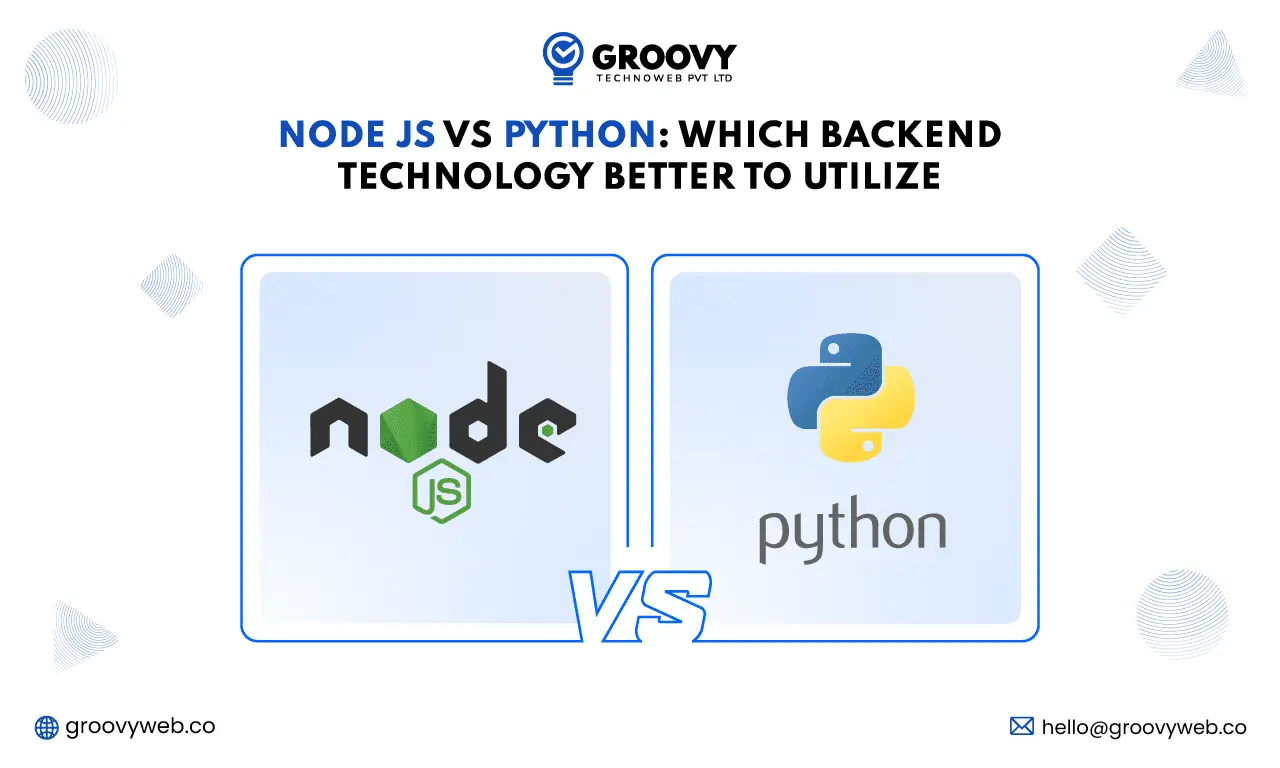What is Node.js, Where, When & How To Use It In 2024
Rahul Motwani
December 11, 2023 858 Views
Quick Summary : This article has provided you with a brief overview of what is Node.js. It has given you a good understanding of the architecture of Node.js and the benefits of using it. Node.js is a powerful runtime environment that can be used to create a wide variety of web applications.
For a long time, client-side scripting was the most common application of JavaScript. This occurred in the <script> elements, which the web browser interprets. Developers would have to work on numerous languages and frameworks for a web application’s client-side and server-side sections, which was a significant limitation.
Node.js was first released in 2009 to bring JavaScript to server-side applications. Node is well-known for many characteristics, and it is generally used to create quick and scalable network applications. Developers were no longer enslaved and had far greater operational freedom due to this.
Did you know that eBay and AliExpress both use Node.js as their primary JS runtime environment? There were 23 million coders in 2018, and the number is continually growing. Let’s look at why Node.js is worth your time, money, and effort in your next project. We will learn about node.js, its Features, Benefits, the purpose of node.js, Architecture, etc.
What is Node.js?
Node.js is a server-side programming language that is open-source. It’s a runtime environment that allows you to run JavaScript code outside a browser. With it, JavaScript can be used for more than just making websites more interactive. It is free and has considerable community support because it is built on Google Chrome‘s V8 JS Engine.
It’s critical to remember that Node.js isn’t a library or a framework. It’s a cross-platform runtime environment (RTE) that can execute various web applications. Web APIs are used to create code, and a JS engine is used to parse it. As a result, Node.js is small and easy to set up.
Node.js Architecture 2024
The mechanisms of Node.js that’s what make it so popular among programmers. Unlike most runtime environments, which use multi-threaded processing models, Node.js does everything in a single thread.
Each server in a multi-threaded processing architecture has a restricted thread pool to which it can access. As a result, whenever a system receives a request, it selects a thread from the group and assigns it to that request to handle the functioning. The processing is synchronized and sequential in this scenario, which implies that just one operation is carried out at a time.
A thread is chosen for each request while using multiple-thread processing until all of them are used up. When this happens, the system must wait for an active thread to become available again. It might result in slow and inefficient apps, negatively impacting customer experience and lead conversions. It’s especially problematic if your program has to handle many concurrent client requests.
On the other hand, the node works on a single thread. The distinction between the two is as expected: single-thread architectures use event loops to conduct blocking Input/Output activities in a non-blocking manner. Don’t be concerned if some of these terms are foreign to you.
In theory, a single-thread design can operate and scale faster and more efficiently than multiple-thread configurations.
How to Setting Up Node.js for Beginners?
Embarking on your Node.js journey? Let’s start with the basics! Setting up Node.js should be a breeze, even for beginners. Follow these simple steps to ensure a smooth initiation into the world of Node.js:
-
Download and Install Node.js:
- Head over to the official Node.js website and download the latest version suitable for your operating system.
- Run the installation package and follow the on-screen instructions.
-
Initialize Your First Project:
- Open your terminal or command prompt and navigate to your desired project directory.
- Run the command
npm initto initialize a new Node.js project. Follow the prompts to set up your project.
-
Explore the Node.js Ecosystem:
- Familiarize yourself with NPM (Node Package Manager), a powerful tool for managing project dependencies.
- Consider using a text editor or an Integrated Development Environment (IDE) like Visual Studio Code for a more comfortable coding experience.
That’s it you have successfully set up Node.js and are ready to dive into the fascinating world of server-side JavaScript.
Let’s look at things included in Node.js Architecture
We have already looked at the Node Architecture to understand better how Node.js works. It is dependent on a number of libraries, with V8 and LIBUV being two of the most important. Both will be discussed.
V8
Node.js framework is based on the V8 engine from Google. It’s often regarded as the quickest JavaScript engine. Furthermore, it aids in the conversion of JavaScript code to machine code. Node.js receives the generated result.
LIBUV
It is an open-source library that uses asynchronous I/O and includes thread pool and event loop functionality.
Applications can benefit from asynchronous I/O since it allows them to overlap I/O operations. Non-blocking is another term for this. In synchronous I/O, on the other hand, the thread must wait until the procedure is completed, as opposed to asynchronous I/O, where it does not.
Events Loop
A thread is a bunch of instructions that Node.js uses to operate processes. Every task in Hire Best PHP Web Development Services is executed in its thread. Three different functions, for example, would run in one thread in Node, which is single-threaded. The core of node.js is this event loop, and it uses a single thread to run the callback functions.
It also controls and balances jobs, offloading the heavier ones to the thread pool and tackling the lesser ones on its own.
Threads Pool
There are four more threads that are entirely unrelated to the main thread. There is some flexibility in how these are configured, ranging from 4 to 128 threads, but Four threads should be plenty for your needs. This group of four is referred to as the Thread pool.
Various demanding activities, such as cryptography, DNS lookups, password caching, and so on, are now available. Such tasks have the potential to cause a bottleneck in the main thread, and they are offloaded onto the thread pool by Node.
Features of Node.js 2024

Node.js has many advantages, becoming an essential part of many businesses and teams. Here’s how they’re summed up:
Event-driven system
It allows a function to run in response to a specific event. Node.js events will enable the server to receive an answer from a previous API call.
Synchronous
It handles requests in a single thread, processes them back a response, and then goes on to the following response. The API libraries for Node.js are all asynchronous.
Now that you’re up and running with Node.js, let’s delve into two crucial aspects: memory management and handling blocking operations.
Handling Memory Leaks
Memory leaks can sneak up on even the best developers. Here’s how you can prevent them:
- Monitor Memory Usage: Use tools like Node.js Profiler to keep an eye on your application’s memory consumption.
- Garbage Collection: Understand how Node.js’s automatic garbage collection works. It helps reclaim memory occupied by unused objects.
Addressing Blocking Operations
Node.js thrives on non-blocking operations, but what about those pesky blocking tasks? Here’s your strategy:
- Asynchronous Paradigm: Embrace the event-driven, non-blocking nature of Node.js to keep your application responsive.
- Use Threads Pool: Leverage Node.js’s threads pool to offload CPU-intensive tasks, ensuring your application remains efficient.
With these insights, you’re equipped to optimize memory usage and tackle blocking operations effectively.
Extremely quick
Node.js operates on the V8 JavaScript engine from Google Chrome. This engine is ideal for web app development and is helpful for products and servers that use machine language.
Cross-platform
Node.js works on different platforms, including Windows, macOS, Linux, UNIX, and a number of mobile platforms.
Microservice
Node.js allows you to deploy and develop web apps quickly. Because Node.js can handle data rapidly, it can also help construct microservices.
Conquering Callback Hell: A Guide to Asynchronous Bliss
Ever found yourself trapped in callback hell? Fear not; you’re not alone! Here’s how to break free and embrace asynchronous bliss:
- Introduction to Callback Hell: Understand what callback hell is and why it occurs in asynchronous code.
- Promises and Async/Await: Say goodbye to nested callbacks! Explore modern JavaScript features like Promises and Async/Await for cleaner, more readable code.
- Error Handling: Master the art of handling errors in asynchronous operations to ensure your code remains robust.
- Modularization: Break down complex code into modular components for better organization and maintainability.
Scalability
Node.js regulates the load balance of CPU cores and handles multiple requests. Surprisingly, it divides the software horizontally, allowing companies to present the app on various platforms and reach enormous audiences.
Community of open-source developers:
Node.js has a large international community. Developers may count on significant support from community members, making free packages, tools, modules, and frameworks available.
Building Robust Back-end API Services and SPAs with Node.js
Node.js isn’t just about scripting; it’s a powerhouse for building back-end APIs and Single-Page Applications (SPAs). Let’s shine a light on these two essential use cases:
Back-end API Services
Node.js, coupled with frameworks like Express.js, is your go-to choice for building robust back-end API services. Here’s why:
- Express.js Framework: Explore the simplicity and flexibility of Express.js for building web applications and APIs.
- RESTful Architecture: Dive into designing RESTful APIs with Node.js, adhering to best practices for scalability and maintainability.
Single-Page Applications (SPAs)
Node.js seamlessly integrates into the world of SPAs. Whether you’re using React, Angular, or Vue, here’s how Node.js elevates your SPA development:
- Efficient SPA Development: Node.js serves as an ideal backend for SPAs, ensuring seamless communication between the front and back ends.
Advantages of Node.js Javascript Framework in 2024
- Node.js has a strong performance for real-time applications.
- High scalability.
- Support from a large group of people in the community.
- Allows for cross-platform programs to be developed.
- It is simple to learn.
- App reaction times are faster.
- Faster loading times arise from quick caching.
What Are the Applications and How to use Node.js in 2024?
There are numerous advantages to using Node.js. It is a resilient, lightweight, and easy-to-scale software development framework. Let’s have a look at the kind of projects that use Node.js.
Development of a single-page application (SPA)
Node.js can create a single-page app that looks and feels like a desktop program, similar to single-page webpages. Its flexibility makes Node.js an excellent choice for building social networking and email platforms. Furthermore, Node.js is the most outstanding choice for SPA development because of its asynchronous data flow quality on the backend.
Applications that run in real-time
Node.js is ideal for building streaming services, social networking apps, collaboration tools, instant messengers, and interactive eCommerce websites, among other things. These apps share one feature: they transmit audio, live text, face-to-face, or video data interactions. It uses web sockets and an event-driven structure to process real-time flows even in high-traffic areas. These features never cause users to experience any delays.
Architecture for Microservices
Node.js makes it simple to build applications with a microservice architecture. Numerous modules with minor functionality combined into a stand-alone app exemplify this architecture type. Software developers use Microservices architecture to create huge enterprise and complicated apps, and this increases the scalability of apps while also making them easier to alter.
IoT
The Internet of Things (IoT) is a complex ecosystem of automated digital machines and computer devices that communicate data without human intervention. Node.js is the most outstanding solution for developing an ecosystem of various linked devices. IoT devices generate many requests that must be processed quickly, and they can handle all of these requests with less downtime. Furthermore, Node.js servers can store a significant amount of data generated by IoT devices.
Projects in DevOps
The fundamentals of DevOps are continuous integration and development. Node.js makes it quick and straightforward to simultaneously create microservices for operating, building, and managing programs.
Top 5 Companies using Node.js in 2024

In 2016, LinkedIn had over 63 million members, 59 percent of them using its mobile app. LinkedIn chose Node.js to handle the surge in users, which allowed them to improve performance by up to 20 times in some circumstances. Furthermore, they could cut the number of servers from 30 to 3, reduce memory overhead, and shift their focus from troubleshooting to application development.
Uber
Uber was one of the first three companies to use Node.js in production. Handling many requests requires a highly scalable application and a cross-platform tech solution. They also needed a technological solution that could match several riders to their drivers in seconds.
Netflix
With more than 130 million customers and one billion hours of data streaming every week, Netflix needed a scalable solution that could handle many requests simultaneously.
Then there’s Node.js! The team decided on the technology so that the backend and frontend could share the same language. They also created a SPA that dramatically reduced its time to get up and run. As a result, the startup time was reduced from 40 minutes to under 60 seconds.
Walmart
The world’s largest supermarket chain wanted its e-commerce website to be faster and more agile for remote teams.
Walmart’s e-commerce website and mobile application receive almost 80 million visitors every month, necessitating the development of a system capable of handling many requests. Their primary goals were faster loading times, an HTML-based frontend, and a move to a microservices architecture, which their previous JAVA program couldn’t provide.
With 330 million-plus monthly active users, Twitter wanted to increase the speed of its mobile website, mobile.twitter.com. The site is among Twitter’s most popular traffic sources. It used to serve the same Twitter website on mobile phones, but it later switched to Node.js to add new features.
Hiring Node.js Developers: Unveiling the Ideal Skill Set
Ready to expand your team with Node.js developers? Here’s your guide to finding the cream of the crop:
-
Key Skills for Node.js Developers
- Proficiency in JavaScript and Node.js frameworks (Express.js, etc.).
- Experience with database technologies like MongoDB or MySQL.
-
Experience with Asynchronous Programming
- Ensure candidates have a solid understanding of asynchronous programming, crucial for harnessing Node.js’s event-driven architecture.
-
Portfolio and Projects
- Evaluate a developer’s portfolio and projects for practical experience. Look for creativity, problem-solving, and adherence to best practices.
-
Team Collaboration
- Communication and collaboration skills are key. A Node.js developer should seamlessly integrate into your team.
Conclusion
You now have a clear picture of node.js features, how to use this framework, Architecture, and the advantages of Node js. Do you wonder if Node.js is worthwhile to learn? We’ll say that Node.js is still a good choice for startups and that the popularity of Node.js in 2022 is growing.
However, things aren’t always so easy with Node.js, and there are a few pitfalls that developers should be aware of. As a result, finding a top Node.js web development company that will complete the project to the highest quality standards is critical. To get more information feel to contact us.
Written by: Rahul Motwani
Rahul Motwani is an experienced Project Manager with a demonstrated history of working in the information technology and services industry. He started his career as a Backend developer and currently has his hands-on managing projects at Groovy Web. He is a strong program and project management professional with a Bachelor's degree focused on Computer Application.
Related Blog

Rahul Motwani
Best Practices for IOS Mobile App Development
Mobile App Development 09 Mar 2023 9 min read
Rahul Motwani
Node JS vs Python: Which Backend Technology Better To Utilize
Web App Development 12 Jun 2023 8 min readSign up for the free Newsletter
For exclusive strategies not found on the blog
